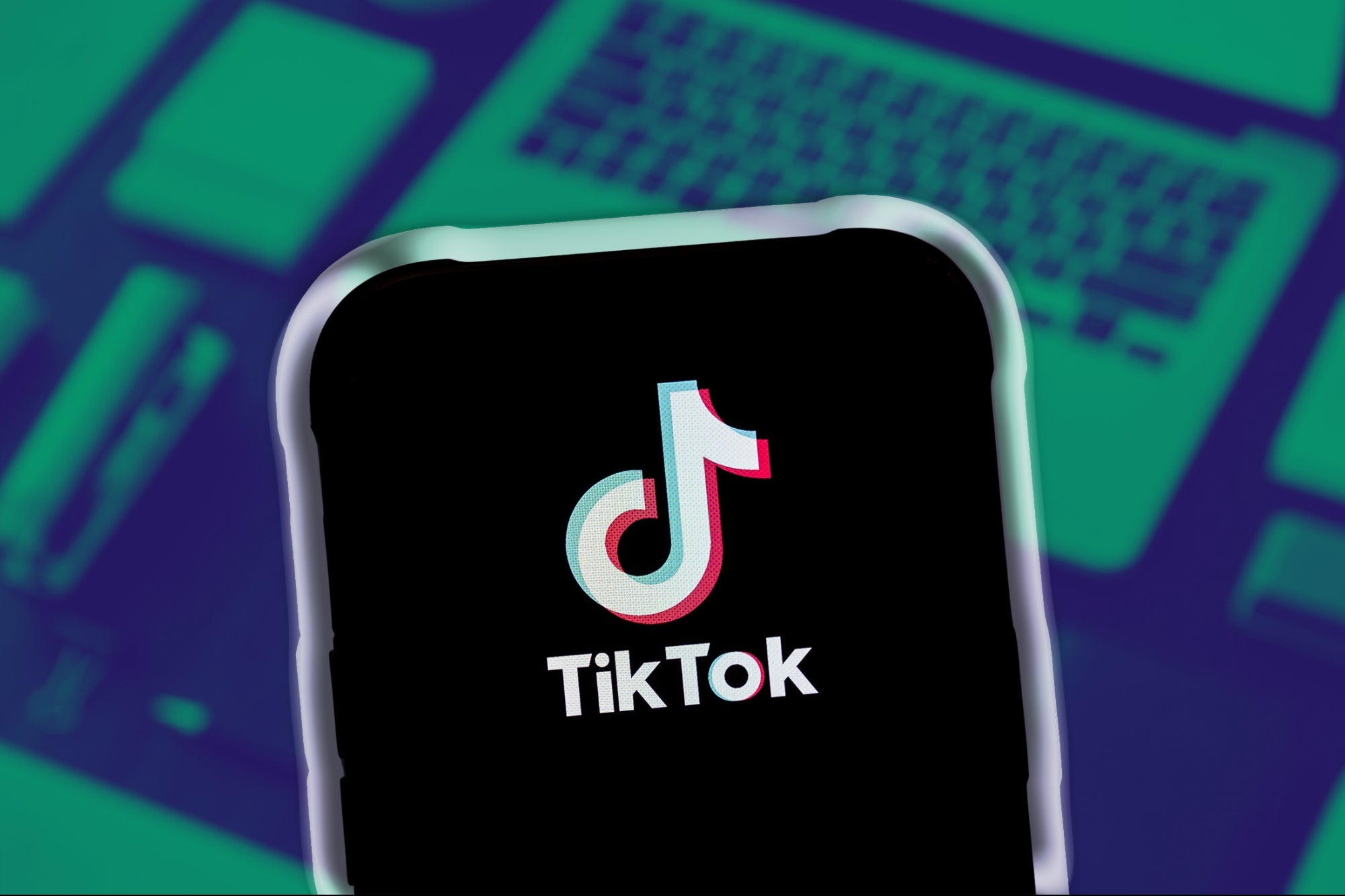Easy Ways to Write Bold Business Copy for Your Website Simple copy changes can help optimize your website for higher conversions.
By Portia Antonia Alexis Edited by Jason Fell
Opinions expressed by Entrepreneur contributors are their own.
You're reading Entrepreneur Europe, an international franchise of Entrepreneur Media.

You have spent a couple thousand dollars in creating the perfect new website design for your business. The design is responsive, comes with high-quality graphics, and has all the necessary elements for high conversion. Then you notice: your conversions aren't improving. You're barely keeping up the conversion rates from your old website.
How is that possible, and why is it happening? Your copy could be the reason to blame.
Research finds that you have less than 8 seconds to attract a visitor with a compelling headline and content. Nearly four out of 10 visitors will not engage with your website if you're missing good content and a well-designed layout.
Writing copy for your business website is a lot more than putting some random text out there. Most of the visitors are wary of the dreaded wall of text. Your copy not only needs a natural tone, but it should be appropriately structured to grab users' attention.
We have put together this guide for businesses that are planning to optimize their web copy for higher conversions. We'll explore multiple aspects of writing high-quality copy that converts, and learn new trends to consider when writing copy. Your website copy has to be simple, well-structured, grammatically correct, and have impactful headlines. Furthermore, as voice-based searches become a norm, your website copy should use natural language and a conversational tone for better search visibility.
5 factors that define the success of your copy.
1. Your ability to portray your products and services. What is unique about your product or service? What's that one thing that could grab your customer's attention?
The best copy explains precisely what your product is without taking too many words. Ideally, a business owner is most suited for writing copy, but unfortunately, not every business owner has the necessary skills to write a compelling copy.
That's where copywriters come in. It's the responsibility of the product owner to help the copywriter understand everything about his or her product.
Your product description should talk about your unique feature and how your customer benefits from it. Additionally, explain how your product alleviates your clients' pain. Instead of focusing on features, talk about benefits. Most copywriters stop after discussing features, leaving it to the customer to understand the benefits.
Once you receive the copy, make sure that it explains everything about your product as concisely as possible.
2. Matching your customers' preferred tone. Who is your target audience? What kind of content do they prefer? What's the right tone for them?
Good copy always takes into account its customers, offering them the best content in their preferred tone. If you're a small business owner selling baby car seats, your copy should address the fears and concerns of a mother or parent.
On the other hand, if you're a medium-sized business offering website analytics tool to executives, your tone would be more professional, matching the persona of your ideal customer.
You can adjust the tone of your copy according to your customers. A formal tone is suitable for business websites targeting different industries, usually B2B, whereas a casual tone works best for personal solutions.
3. Attention-grabbing headlines are a must. Irrespective of how good your copy is, you won't attract the audience if your headlines aren't impactful. As many as four out of five visitors will read only the headline of your page and decide whether to read the content or look at other search results.
Copyblogger offers excellent advice for headline writing, calling it 4U's. Your headline should be:
- Unique: Do not copy what your competitor has. Instead, write unique headlines.
- Urgent: Create a sense of urgency. E-commerce websites use FOMO (fear of mission out) to boost their sales during promotional seasons.
- Useful: It goes without saying that your headline should describe what the page is all about.
- Ultra-specific: Paint a specific, clear picture with your headline, leaving no room for confusion.
4. Be persuasive with your copy. Unlike a blog or any other kind of content writing, copywriting has a single purpose; to make a sale. How do you do that?
Creating persuasive content takes the reader from your headline to the call to action. You can use the AIDA (Attention→ Interest → Desire → Action) formula for creating a compelling copy.
Let's find out how AIDA works.
- Attention: This step creates the foundation of a good copy. You grab the attention of your target customer with a catchy headline. Your opening sentence can also be used for grabbing attention.
- Interest: In the second step, you already have your visitor's attention; now, you need to cultivate curiosity. For example, if you're a digital marketing agency, pique your client's interest with a promise, such as, "We're going to explain how to get your first 1,000 followers on Instagram step-by-step (2020)."
- Desire: This is where you want to touch on your prospect's desire. Taking it from the previous example, it could be "If you're trying to boost your social sales, this guide will help you get results in (90) days."
- Action: Now that you have got your client, visitor right where you want him, it's time to get them to act. It could be subscribing to a list, placing an order, or getting in touch with your team. Be as specific about what the customer needs to do as you can. Do not leave any room for guesswork.
5. Simple language, short paragraphs, and conversational tone. Keep it simple, concise, and conversational! That's all you need to do when writing business copy.
Most people use simple, natural language when interacting with each other. Imagine a customer coming to your hardware store. He is more likely to ask, "Hey, where can I find towing rope," so keep your copy natural.
Similarly, a majority of online visitors skim through content, which means you should write small paragraphs with clear, distinguishable headings. You can boost your readability by using short paragraphs, bullet lists, titles, and breaks. Make the content easier to read!
We emphasize a lot on maintaining a conversational tone because of changing visitor behavior. Seven out of 10 smartphone users, 18 to 29 years old, use voice search, and the trend is catching on with the older generation as well. Your copy has to be conversational and address the common questions, such as "How do I boost my Instagram followers?"
How to write a bold business copy for your company website
Home page: The home page of your business website is quite similar to your storefront. You may want to use it as a landing page (remember that 50 percent OFF stickers) or a brand-building page (we serve humans, #MillerArt).
So, you have to start by identifying the purpose of your home page. Most of the businesses use the home page for creating brand awareness, so let's find out how you reflect your brand on your home page.
- What is your value proposition? Explain in a single sentence why your brand exists. For example, if you are a copywriting agency (indeed), your brand proposition could be "Writing copy for humans." Your reader should understand your brand proposition within the first 3 to 4 seconds.
- What is your brand story? If you have a fresh brand story, this is the time and place to mention it. Readers love stories, and an exciting brand story can help you grab your visitor's interest. The idea here is to show your visitor how your brand made a client's life easier. Also, keep it short.
- Establish authenticity: Why should your customers believe you? That's where social proofs, news mentions, and interviews come in. For instance, if you run a small boutique retirement solutions agency, you'd want to put a news clipping, any significant publications, and a list of local businesses you're serving.
- Place your services and product links now. The primary intent of this segment is to redirect your visitors to specific service pages. In case you have more than four or five primary products or services, list your most popular ones here.
Products and services: Your product pages should convince a customer to place an order or generate a lead. So, how do you that? By creating smooth copy that takes your customer from one section to the next without much effort.
Let's decipher the art of writing good product and service descriptions.
- Describe your product: The easier it is for a customer to understand your product or service, the higher are your chances of making a sale. Use simple, easy-to-under language, and make it short, to-the-point.
- Talk about your USP (Unique Selling Point): Every product has a unique feature, and it is critical to highlight it in your copy. If you have an apparel store for pregnant women, list that as your USP.
- List its primary benefit: After covering your USP, you need to explain how it benefits your target audience? If you are selling clothes for pregnant women, list the primary benefit of your cloth. It could be custom-fit or loose, adjustable fit for expectant mothers. The trick is to explain the benefit, giving your customers a clear idea about the utility of your product.
- What pain point does it address? Explain how your product relieves your customers' pain. Taking the same example, you can point out that pregnant women don't have to visit multiple stores to find comfortable clothes. Their lives would become easier with your custom-maternity clothes.
- It's useful to have a couple of testimonials that indicate how your product or service helped a customer. Testimonials work quite well in rapport building and cementing trust.
- Close with additional benefits, features: Now that you have covered all the major selling points, round up your product description with all the extra features and their respective benefits for your customers.
Testimonials: Does your business have testimonials? It should! Put all those glowing reviews right here. If possible, get pictures of your customers and put them next to their quotes to add some personalization and credibility to the testimonials. For Kleo's, this might look like:
"Kleo's Coffee shipped to me quickly. I enjoyed the rich taste and the ability to put my dog's face on the packaging. My wife thought that was a hoot!" -Dan L., Missoula, MT, USA
Make sure you ask customers to submit their testimonials by providing a link to the "contact us" page and link back to specific products when customers say great things about them. This type of interlinking reflects the best SEO practice and helps your customers navigate.
About Us: Your "About Us" page should have a title like this: "About Kleo's Coffee." On this page, your customers want to know about your story (how and why you got started), your values, and your business name. For example, if the business owner isn't named Kleo, where did that originate?
A heartfelt story about Tuesday coffee with the owner's deceased mother Kleo could communicate why coffee is so unique to the business owner, building brand trust immediately.
You don't have to overthink this page, but it's a great place to include pictures of your business operations.
Contact Us: The Contact Us page is among the most straightforward pages on your website, and there isn't much that you have to do here.
Invite your customers to get in touch and keep the content above the fold. A user shouldn't have to scroll down to get in touch.
Make sure to keep the fields under five. Research proves that conversion rates go higher as the number of fields drop. Also, avoid any friction by asking for necessary information only, and mention a privacy policy to eliminate any doubts.
Bottom line, your copy is just as important as your website design, but there are no set rules for copywriting. It is best to experiment little and try different styles, structures until you get it right. You can use customer feedback forms or occasional surveys to find out what customers like about your website. Keep improving your website and copy for higher conversions.













